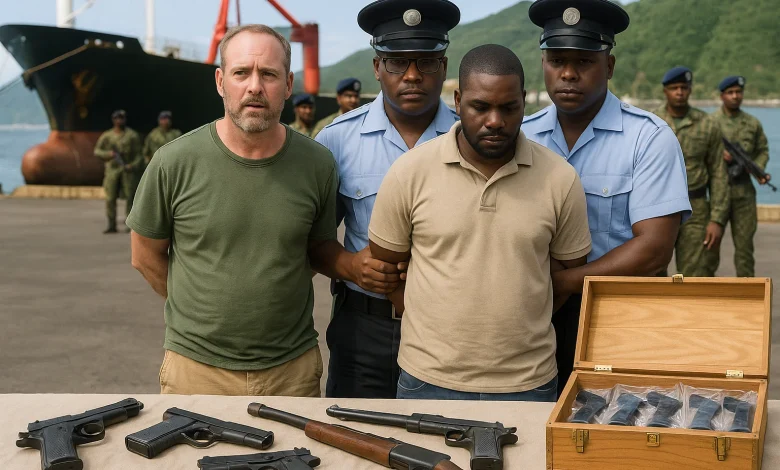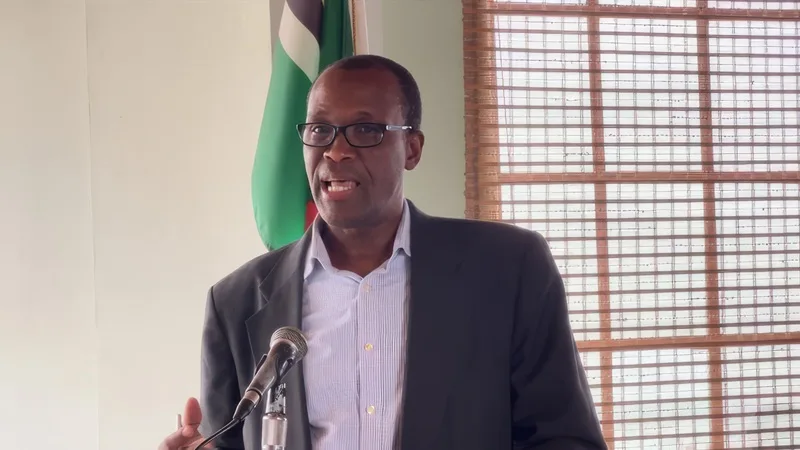Firearms Trafficking in Dominica

Firearms Trafficking in Dominica is becoming a pressing national security issue, raising concerns about violence, organised crime, and public safety. Although long-term statistical evidence remains limited, recent law enforcement interventions point to a defined trend: Dominica is increasingly exposed as both an entry point for illegal firearms and a transit location for weapons destined for the Eastern Caribbean. This dual vulnerability intensifies local risks while linking the island to broader regional security dynamics.
Scope, Data & Emerging Patterns
- From 23 January to 14 June 2025, the Commonwealth of Dominica Police Force reported the seizure of 42 firearms and 220 rounds of ammunition at ports of entry. Additionally, seven firearms and 69 rounds were intercepted on the streets, bringing the total to 49 firearms and 289 rounds for that period.
- Arrests tied to these seizures numbered 21 individuals, of whom seven have already been convicted, according to police.
- A news release indicates that U.S. and Dominican authorities are investigating schemes dating back to at least January 2021 involving the export of firearms components and full firearms from the U.S. to Dominica, through parcel shipments and freight forwarding.
- Training records show that Dominica officials participated in a November 2022 course on “Interdicting Small Arms, Ammunition, Parts and Components (ISAAPC)” by the United Nations Regional Centre for Peace, Disarmament and Development in Latin America and the Caribbean (UNLIREC) to boost detection capacity.
These figures, while representing just a portion of trafficking activity, point to a growing arms-market component in Dominica’s security environment.
Drivers & Transit Role
- Geographic and maritime factors: Dominica’s location in the Eastern Caribbean, with multiple small ports and significant coastal access, makes it susceptible to maritime transfers of weapons. Senior officials have described the detected weapons as “equivalent to the M-16 as carried by soldiers” (referring to seized AR-15 rifles).
- Linkage with narcotics and organised crime: Arms trafficking is often associated with narcotics shipments; the combination of drug transit routes and weak arms control magnifies risk. For example, the arrests noted in firearms trafficking include cases where weapons were “being brought into the Commonwealth of Dominica or on their way to transit to neighbouring islands.”
- Legal and institutional gaps: Until recently, offences were often charged as simple possession rather than trafficking; the director of public prosecutions has indicated a shift to trafficking charges under an amendment passed since 2013, imposing penalties of up to a fine of EC$700,000 and 25 years’ imprisonment.
Legal Framework & Institutional Response
- Under Dominica’s laws, an amendment to Section 26(a) (since 2013) explicitly criminalises firearms trafficking with heavy penalties.
- The Police Force, Customs and Excise Division, and the country’s Financial Intelligence Unit (FIU) are jointly responsible for enforcement, intelligence and interdiction efforts.
- Regional cooperation: Dominica engages with the Caribbean Community Implementation Agency for Crime and Security (CARICOM IMPACS), the EU, France and UNLIREC to strengthen capacity and intelligence-sharing to counter illicit arms trafficking.
Impact on Violence & Public Safety
The infiltration of illegal firearms into Dominica has direct consequences for the risk of violence. Assault rifles and other high-power weapons raise the likelihood of lethal encounters, rather than crimes committed with lower-level weapons. In jurisdictions with similar profiles, the majority of intercepted firearms originate in the U.S., a pattern likely relevant to Dominica based on U.S. data showing 73% of Caribbean-recovered firearms traced to the U.S. between 2018-2022. The presence of trafficked arms increases risk for armed robbery, gang disputes and violent crimes involving firearms rather than knives or blunt instruments.
Challenges & Strategic Gaps
- Data limitations: Although some seizures and arrests are reported, comprehensive national statistics detailing types of firearms, points of origin, transit chains and final destinations are lacking.
- Capacity constraints: Small-island logistics, remote landing sites, limited customs scanning at smaller ports and resource constraints hamper interdiction. The EC$2.7 million investment in port scanners was announced in June 2025 to address these gaps.
- Legal/operational coordination: Trafficking routes span maritime, air and land modes; effective interdiction requires strong coordination, intelligence sharing and timely prosecution. The shift to trafficking charges is recent, and outcomes (conviction rates, asset forfeiture) are only now emerging.
- Preventive efforts: Addressing demand, weapon diversion, stockpile management and secure storage of military/paramilitary arms still require attention.
Future Outlook
Combating firearms trafficking in Dominica calls for a comprehensive strategy combining enforcement, prevention, and data-driven policy. Key priorities include:
- Enhancing maritime surveillance, expanding the use of technology (scanners, vessel-tracking) and strengthening customs controls at small ports and beaches.
- Building traceability and record-keeping, so weapons can be traced from origin to point of seizure and links to trafficking networks exposed.
- Coordinating regionally via CARICOM, RSS, EU and UN agencies to share intelligence, harmonise legal frameworks and apply mutual assistance.
- Integrating arms-control efforts with narcotics and organised-crime investigations, given the overlap between weapons, drugs and regional routes.
- Strengthening legal tools, including asset seizure, enhanced penalties, witness protection, and prosecutorial capacity, so interdiction disrupts supply chains rather than just seizures.
- Collecting and publishing better data and indicators, so policy effectiveness can be measured (e.g., number of trafficking cases, seizures by type, conviction rates, origin country of firearms).
Firearms trafficking in Dominica is evolving from a peripheral issue to a significant component of national security and crime-prevention strategy. Growing seizures, new legal tools, and capacity-building activities offer promise, but persistent vulnerabilities and resource constraints mean the island’s security architecture must remain adaptable and well-coordinated to meet the threat.




